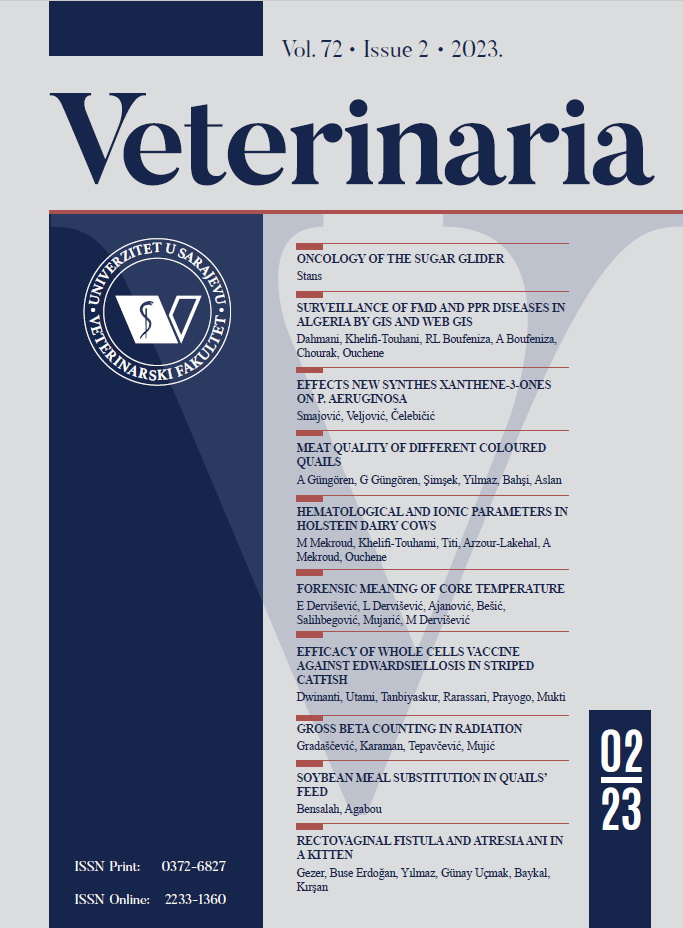The forensic significance of core temperature in identifying primary and secondary hypothermia as a cause of death: A pilot study on Wistar rats
DOI:
https://doi.org/10.51607/22331360.2025.74.S1.79Keywords:
Forensic, Hypothermia, Primary, Secondary, Survival timeAbstract
Hypothermia is defined as a body core temperature below 35 °C and
can be caused by internal or external stress. Primary hypothermia
is caused by excessive exposure to low environmental temperature
without any medical conditions prior to that. Secondary hypothermia
is caused by alteration in thermoregulation by disease, trauma, surgery,
drugs, or infections. The aim of the research is to investigate core
temperature values in rats subjected to specific water temperatures at
five different time points. It focuses on distinguishing between primary
and secondary hypothermia in these rats.
The total 21 Wistar rats were divided into three experimental groups
as: Control group rats exposed only to hypothermic condition (n = 7);
Alcohol + hypothermia (n = 7); and Benzodiazepines + hypothermia
(n = 7). The temperature spots analyzed in the study were: normal core
temperature, core temperature during injection of 0,3 ml ketamine,
temperature of immersion and the temperature at the onset of
hypothermia and temperature at the time of death.
In our study the comparative analysis of body temperatures at various
time points following submersion in water revealed significant
differences among the study groups treated with either alcohol
or benzodiazepines and the control group. Notable differences
were observed in baseline temperature, post-anesthesia induction
temperature, and immediate post-submersion temperature. Specifically,
significant differences were discovered among the alcohol and
benzodiazepine groups (p < 0.001) and ranging from the alcohol and
control groups (p < 0.001). The analysis of survival times following
induced hypothermia revealed a statistically significant difference
among the three experimental groups (p = 0.04), though subsequent
post-hoc comparisons did not demonstrate significant differences in
mean survival times.
There is a difference in survival time between primary and secondary
hypothermia groups, depending on consumption and intoxication with
alcohol or benzodiazepines. The analysis of survival times following
induced hypothermia showed a statistically significant difference
among the groups.
Downloads
Published
How to Cite
Issue
Section
License
Copyright (c) 2025 Amina Zorlak-Čavčić, Muhamed Katica, Emina Dervišević

This work is licensed under a Creative Commons Attribution 4.0 International License.








